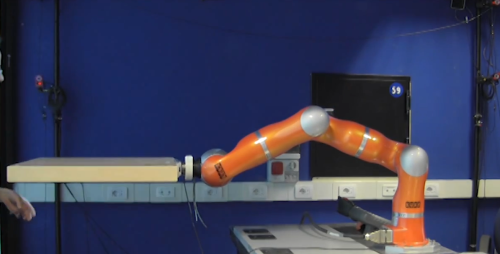Assembling furniture can be a grueling task. Often we’re left surrounded by screws, parts that appear to belong nowhere, and a set of directions we’re not thrilled about deciphering.
Wouldn’t it be great if we had a robot that knew how to do this? Well, it’s almost here.

This robot will assist in your furniture assembly.
Researchers Leonel Rozo, Sylvain Calinon, and Darwin Caldwell from the Italian Institute of Technology’s Department of Advanced Robotics have developed a robot that is learning how to assemble IKEA furniture. The robot is not pre-programmed, but rather relies on recorded force pattern and visual information to learn by imitation.
The following video released by Sylvain Calinon demonstrates how the robot learns to assemble a table.
Each piece of furniture being assembled has specific characteristics that need to be transferred to the robot. It would be impossible and not very efficient to re-program the robot each time it needs to assemble a new, unfamiliar piece of furniture, so instead the team shows the robot how it should collaborate with another user in a method called “kinesthetic teaching.”
How it works
The robot in the video has force sensors mounted to its wrist and is equipped with a marker-based vision tracking system that records position and orientation of the table legs that need to be mounted at the four different points on the table top.
After the demonstration, the robot learns that it has to work with the user, allowing him to adjust the table top to a comfortable position to screw in the correct leg. Once the user begins screwing in the leg, the robot becomes stiff in order to help him carry out the task.
In its paper, “Learning Collaborative Impedance-based Robot Behaviors,” the team discusses the reason for developing such as robot. “A need is arising for robots that do not just replicate the task on their own, but that also interact with humans in safe and natural way to accomplish tasks cooperatively,” they said.
What’s next
In their future work, the team plans to provide the robot with even more active roles so that it can have a more proactive, rather than reactive role in the assembly process. For example, if the builder is holding the leg too far away from the robot, the robot could anticipate the movement and move toward the leg.
So have no fear, soon you may have some assistance putting together your furniture.
Download the research paper below to learn more about the robot that will assemble your furniture.
Advertisement
Learn more about Electronic Products Magazine





